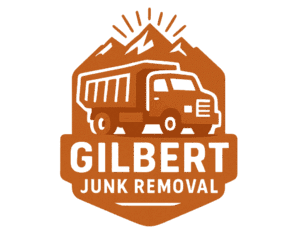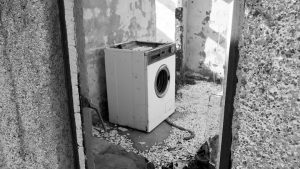Hoarding disorder is a complex mental health condition characterized by the excessive accumulation of possessions and an inability to discard them. People with hoarding disorder have difficulty parting with items, even if they are of little or no value, leading to cluttered living spaces that can become unsafe and unsanitary. It is important to understand hoarding disorder and address the issue because it can have serious consequences for the individual’s physical and mental health, as well as their overall quality of life.
Hoarding disorder is not simply a matter of being messy or disorganized. It is a recognized mental health condition that affects millions of people worldwide. The exact cause of hoarding disorder is unknown, but it is believed to be a combination of genetic, environmental, and psychological factors. Hoarding can have a significant impact on the individual’s daily functioning, relationships, and overall well-being.
Addressing hoarding disorder is crucial because it can lead to a range of negative consequences. Not only does hoarding pose health risks and safety hazards, but it can also contribute to social isolation, financial difficulties, and legal issues. By understanding hoarding disorder and taking steps to address it, individuals can improve their quality of life and regain control over their living spaces.
Key Takeaways
- Hoarding disorder can be dangerous and pose health risks and safety hazards.
- Signs and symptoms of hoarding disorder include difficulty discarding items, cluttered living spaces, and social isolation.
- Overcoming hoarding involves sorting, organizing, and discarding items, as well as addressing emotional attachments to clutter.
- Professional help, such as working with Gilbert Junk Removal, can be crucial in successfully cleaning up a hoarder’s living space.
- Maintaining a clutter-free environment requires ongoing effort and a plan of action to prevent relapse.
The Dangers of Hoarding: Health Risks and Safety Hazards
Hoarding can have serious health risks associated with it. Cluttered living spaces provide an ideal breeding ground for mold, bacteria, pests, and other allergens. These can lead to respiratory problems, allergies, infections, and other health issues. In extreme cases, hoarding can even pose a fire hazard if clutter blocks exits or interferes with electrical systems.
Safety hazards are also a major concern when it comes to hoarding disorder. Piles of clutter can create tripping hazards and obstruct pathways, increasing the risk of falls and injuries. The weight of accumulated items can also put strain on the structural integrity of a building, leading to collapses or other accidents. In extreme cases, hoarding can even result in the loss of a home or eviction.
Examples of extreme hoarding cases highlight the dangers and consequences of hoarding disorder. In some instances, homes have become so cluttered that individuals are unable to access basic necessities such as food, water, and hygiene facilities. This can lead to malnutrition, dehydration, and unsanitary living conditions. The accumulation of items can also make it difficult for emergency responders to access the home in the event of an emergency.
Signs and Symptoms of Hoarding Disorder
Recognizing the signs and symptoms of hoarding disorder is essential for early intervention and treatment. Some common signs include:
1. Difficulty discarding items: Individuals with hoarding disorder have a strong attachment to their possessions and find it extremely challenging to let go of even the most insignificant items.
2. Excessive clutter: Hoarders often have cluttered living spaces that make it difficult to move around or use rooms for their intended purposes.
3. Distress or anxiety when attempting to discard items: Hoarders may experience intense anxiety or distress when faced with the prospect of getting rid of their possessions.
4. Difficulty organizing: Hoarders struggle with organizing their belongings and often have difficulty finding things when they need them.
5. Social isolation: Hoarding can lead to social isolation as individuals may feel embarrassed or ashamed about their living conditions and avoid inviting others into their homes.
If you suspect that you or someone you know may be struggling with hoarding disorder, it is important to seek professional help. A mental health professional can provide an accurate diagnosis and develop a treatment plan tailored to the individual’s needs.
Overcoming Hoarding: How to Conquer Clutter and Clean Up
Tackling hoarding disorder can be overwhelming, but with the right approach, it is possible to conquer clutter and clean up. Here are some steps to take when addressing hoarding:
1. Start small: Begin by tackling one small area at a time rather than trying to tackle the entire living space all at once. This can help prevent overwhelm and make the process more manageable.
2. Set realistic goals: Break down the decluttering process into smaller, achievable goals. Celebrate each milestone along the way to stay motivated.
3. Sort items into categories: Create categories for items such as keep, donate, sell, and discard. This can help streamline the decision-making process and make it easier to determine what to do with each item.
4. Seek support: Enlist the help of friends, family members, or a professional hoarder cleanup service like Gilbert Junk Removal. Having support can make the process less daunting and provide encouragement along the way.
5. Take breaks: Decluttering can be emotionally and physically exhausting. Take regular breaks to rest and recharge.
6. Practice self-compassion: It is important to be patient and kind to yourself throughout the decluttering process. Hoarding disorder is a complex condition, and progress may be slow at times.
The Importance of Professional Help: Working with Gilbert Junk Removal
Working with a professional hoarder cleanup service like Gilbert Junk Removal can be incredibly beneficial when addressing hoarding disorder. Here are some reasons why professional help is important:
1. Expertise and experience: Professional hoarder cleanup services have the knowledge and experience to handle hoarding situations safely and efficiently. They understand the unique challenges of hoarding disorder and can provide guidance throughout the cleanup process.
2. Emotional support: Hoarding disorder can be emotionally challenging, and having professionals who are trained in dealing with these situations can provide much-needed emotional support.
3. Efficiency: Professional hoarder cleanup services have the resources and equipment to handle large-scale cleanups quickly and efficiently. They can help restore living spaces to a safe and habitable condition in a timely manner.
4. Disposal and recycling: Hoarder cleanup services like Gilbert Junk Removal have systems in place for proper disposal and recycling of unwanted items. They can ensure that items are disposed of responsibly, minimizing the impact on the environment.
Hoarder Cleanup Strategies: Sorting, Organizing, and Discarding
Sorting through clutter is a crucial step in the hoarder cleanup process. Here are some strategies for effectively sorting, organizing, and discarding items:
1. Create a sorting system: Designate areas or containers for different categories of items, such as keep, donate, sell, and discard. This can help streamline the sorting process and make it easier to make decisions about each item.
2. Start with easy decisions: Begin by sorting through items that are easier to let go of, such as expired food, broken items, or duplicates. This can help build momentum and make it easier to tackle more challenging decisions later on.
3. Use the one-year rule: If you haven’t used or worn an item in over a year, consider letting it go. This can help reduce clutter and make it easier to maintain a clutter-free environment.
4. Consider sentimental items: Sentimental items can be particularly challenging to let go of. Take time to reflect on the true value of these items and consider whether they bring joy or serve a practical purpose in your life.
5. Seek professional guidance: If you are struggling with making decisions about certain items, consider seeking professional guidance from a therapist or hoarding specialist. They can provide support and help you navigate the emotional challenges of letting go.
Addressing Emotional Attachments: Letting Go of Clutter
One of the biggest challenges in hoarder cleanup is addressing emotional attachments to possessions. Here are some strategies for letting go of clutter:
1. Focus on the future: Visualize the benefits of a clutter-free environment and how it can improve your quality of life. This can help motivate you to let go of items that no longer serve a purpose.
2. Take photos: If you are struggling to part with sentimental items, consider taking photos of them before letting them go. This can help preserve the memories associated with the items without the need to physically keep them.
3. Practice gratitude: Express gratitude for the items that have served you in the past and acknowledge that it is now time to let them go. Recognize that memories and experiences are more valuable than physical possessions.
4. Seek support: Lean on friends, family members, or a therapist for emotional support during the decluttering process. They can provide encouragement and help you navigate the emotional challenges of letting go.
5. Celebrate progress: Acknowledge and celebrate each step forward in the decluttering process. Recognize that letting go of clutter is a significant accomplishment and be proud of your progress.
Creating a Plan of Action: Tips for a Successful Hoarder Cleanup
Creating a plan of action is essential for a successful hoarder cleanup. Here are some tips for creating an effective plan:
1. Assess the situation: Start by assessing the extent of the clutter and identifying areas that require immediate attention. This will help you prioritize tasks and create a realistic timeline.
2. Set goals: Determine what you want to achieve through the hoarder cleanup process. Set specific, measurable, achievable, relevant, and time-bound (SMART) goals to keep yourself focused and motivated.
3. Break it down: Break down the cleanup process into smaller, manageable tasks. This will make it easier to tackle one step at a time and prevent overwhelm.
4. Allocate time: Set aside dedicated time each day or week to work on decluttering. Consistency is key to making progress and maintaining momentum.
5. Gather resources: Gather the necessary supplies and resources for the cleanup process, such as garbage bags, storage containers, cleaning supplies, and professional help if needed.
6. Seek professional assistance: If the hoarding situation is severe or overwhelming, consider seeking professional assistance from a hoarder cleanup service like Gilbert Junk Removal. They can provide guidance and support throughout the process.
Maintaining a Clutter-Free Environment: Preventing Relapse
Once the hoarder cleanup process is complete, it is important to take steps to maintain a clutter-free environment and prevent relapse. Here are some strategies for maintaining a clutter-free space:
1. Establish routines: Develop daily or weekly routines for cleaning and organizing. This will help prevent clutter from accumulating and make it easier to maintain a tidy living space.
2. Practice mindful consumption: Be mindful of what you bring into your home. Before making a purchase, consider whether the item is truly necessary and whether it will add value to your life.
3. Regular decluttering sessions: Schedule regular decluttering sessions to reassess your belongings and let go of items that are no longer needed or used.
4. Storage solutions: Invest in storage solutions that help keep your belongings organized and easily accessible. This can help prevent clutter from accumulating and make it easier to maintain a clutter-free environment.
5. Ongoing support: Seek ongoing support from friends, family members, or support groups to help you stay accountable and motivated in maintaining a clutter-free environment.
Moving Forward with a Clean Slate
In conclusion, hoarding disorder is a complex mental health condition that requires understanding and intervention. The dangers of hoarding include health risks and safety hazards that can have serious consequences for individuals’ physical and mental well-being. Recognizing the signs and symptoms of hoarding disorder is crucial for early intervention and treatment.
Overcoming hoarding disorder requires a systematic approach to decluttering and cleaning up. Working with a professional hoarder cleanup service like Gilbert Junk Removal can provide the expertise, support, and resources needed for a successful cleanup. Strategies such as sorting, organizing, and discarding items, as well as addressing emotional attachments, are essential for letting go of clutter.
Creating a plan of action and maintaining a clutter-free environment are key to preventing relapse and moving forward with a clean slate. By taking steps to address hoarding disorder, individuals can improve their quality of life, regain control over their living spaces, and create a healthier and happier environment for themselves and those around them.
If you’re looking for effective strategies to conquer clutter and declutter your space, you may also find this article on junk removal in Gilbert, AZ helpful. Whether you need to get rid of old furniture, clear out a hoarder’s home, or simply declutter your living space, professional junk removal services can provide the assistance you need. Check out this informative article on junk removal in Gilbert, AZ to learn more about how these services can help you reclaim your space and create a clutter-free environment.




